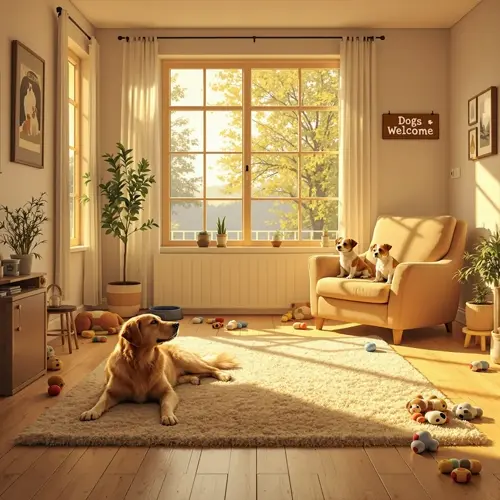Do dogs prefer oversized beds?

Written by
Wang Jiahao
Reviewed by
Prof. Henry Webster, Ph.D.Oversized beds provide more comfort after several hours of shaping, but they damage areas in a dog's body. The extra space offers poor support for joint regions, allowing the body to sink into unsupported areas and create pressure points. This is a strain on the hips and shoulders, especially for large breeds.
Joint Stress Factors
- Unsupported areas increase pressure on hips
- Spinal misalignment during sleep cycles
- Struggling to find stable positions
- Reduced therapeutic benefits of orthopedic foam
Comfort Issues
- Excess space reduces security feeling
- Dogs curl defensively in corners
- Temperature regulation problems in empty zones
- Anxiety from lack of boundary definition
Health Consequences
- Arthritis progression in senior dogs
- Muscle stiffness after sleep
- Reduced mobility during waking hours
- Increased pain medication dependency
Proper bed dimensions precisely match body proportions. Take the shoulder width and the sleeping length. Allow for 6-10 inches additional for movement. My shepherd improved immediately after getting his fifty-by-thirty-four-inch bed. Oversized beds wasted space and did not support horny developments.
The specific needs of your breed will determine ideal sizing. Deep-chested breeds, such as Greyhounds, require additional length rather than width. Bulldogs require wider and more stable platforms. Never assume one size fits all. Always measure your actual dog, not the average of the breed.
Orthopedic beds require precision fitting, more than standard beds. Any excess space will render the therapeutic foam ineffective. Density must match weight distribution exactly. Oversizing is a waste of funds and a detriment to therapeutic health benefits.
Indicators of bed size being too large/oversized are restless sleep and stiffness in the morning. Dogs will shift and change positions during the night as they attempt to find a comfortable spot. Dogs tend to avoid the center of the bed and tend to stay toward the edge. Replace oversized/bed immediately to avoid prolonging joint damage.
Select beds that promote "natural positions" and avoid excess space. Stretchers will need some length for extensions. Sleepers who curl up will see more definition in their boundaries. An appropriately sized dog reduces the risk of arthritis and enhances its quality of life. Remember to measure at intervals, as dogs do age appropriately.
Read the full article: Dog Bed Size Guide: Find the Perfect Fit

